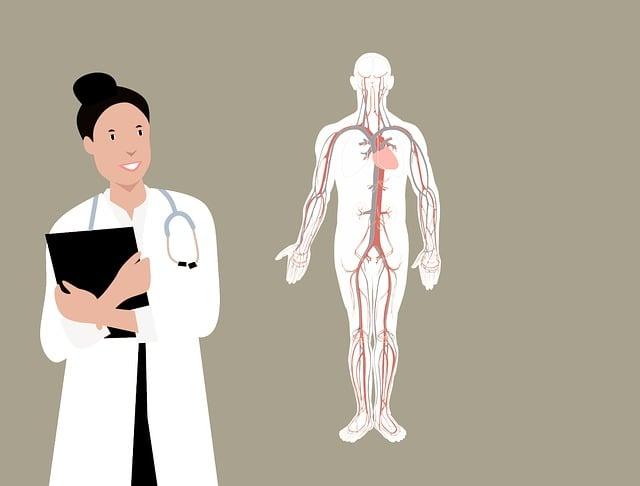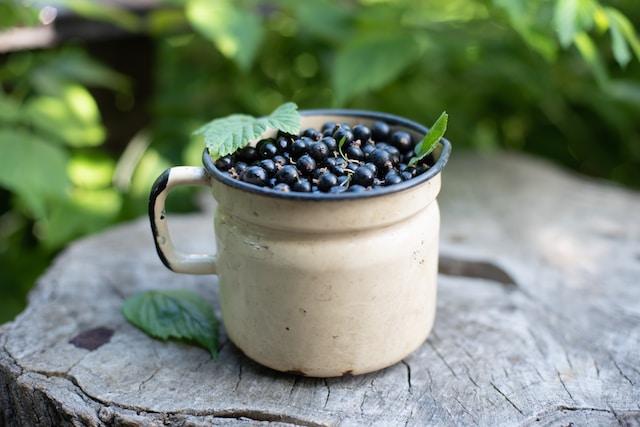L’AVC est devenu la première cause de mortalité chez la femme. Il correspond à une lésion organique de type neurologique due à un vaisseau cérébral qui se bouche ou à une hémorragie dans le cerveau. Dans 80% des cas, il s’agit d’accidents ischémiques, appelés également infarctus cérébraux ou ramollissements cérébraux.
Ils sont dus à l’occlusion d’une artère par un caillot qui se forme localement sur des parois abîmées du vaisseau (athérosclérose) ou qui provient du cœur (le caillot se détache et génère une embolie.)
In 20% of cases, hemorrhagic accidents are caused by high blood pressure, tumors, trauma, vessel anomalies (aneurysms) or by a particular predisposition, such as anticoagulant treatment, alcoholism, blood clotting disorders, high aspirin intake, fatty diets, lack of omega-3 EPA (fish oils).
Stroke frequency
There are 150,000 new cases a year in France, with a 50% reduction over the last few decades, thanks to measures to prevent risk factors.
The average age of onset is around 70, with 10% of cases (10-15,000/year) occurring before the age of 45, and a slight male predominance.
Every day, 50 women die as a result of a stroke!
Signs and symptoms of stroke
- In ischemic strokes, the onset may be abrupt or progressive, with clear neurological disorders such as hemiplegia (paralysis of half the body), aphasia (loss of speech), or loss of vision in half a visual field (homonymous lateral hemianopia).
- In hemorrhagic accidents, signs usually appear progressively, sometimes preceded by headaches and/or vomiting; disorders are often severe, with coma and progressive worsening.
One small sign stands out: the impossibility of whistling.
These accidents can be caused by high blood pressure, high cholesterol (fats), smoking (which increases the risk of stroke by a factor of 2), lack of exercise, irregular pulse (possibility of embolisms).
Stroke: examinations
- CT or MRI scans are used for diagnosis.
- In the case of a hemorrhage in a young person, angiography (radiological examination with injection of a product that visualizes the arteries) is indicated, to look for an operable vessel malformation (aneurysm).
- Blood tests are essential to determine the terrain:
- The inflammatory state mobilizes the white blood cells (leukocytes, macrophages, interferon) and exalts all functions. It is imperative to "put this fire out".
- Sedimentation rate.
- C. Reactive Protein (CRP ultrasensitive) is the most accurate predictor of cardiovascular risk.

Stroke: Course and complications
Full recovery is possible, but in eight out of ten cases, there are more or less significant after-effects. This is a serious condition that can rapidly worsen with convulsions (epilepsy), coma and brain death.
Stroke prevention
Prevention focuses on risk factors: arterial hypertension (its treatment reduces the occurrence of stroke by 50%), smoking, diabetes, hypercholesterolemia.
If the initial accident was caused by an embolism, continuous blood-thinning treatment with aspirin or anticoagulant drugs will be required.
Strokes: official treatment
- In the case of cerebral ischemia, the aim of treatment is to dissolve the clot to prevent its extension and worsening of symptoms. The drugs used are aspirin and sometimes anticoagulants, as well as anti-hypertensives (it is essential to maintain an appropriate blood pressure). Beware of taking too much aspirin, which can cause bleeding.
- In the case of a hemorrhagic accident, any malformation of the cerebral vessels will be investigated and treated, either surgically or by occluding the arteries and inserting a probe into the site of the malformation.
- In all cases, a healthy lifestyle is essential (healthy diet and food, stress management, regular physical activity, avoidance of air pollution). After the acute phase, recovery is encouraged by rehabilitation carried out by specialized personnel (physiotherapists, speech therapists, etc.).
Stroke: homeopathy
We have a range of remedies to choose from.
In the acute phase
- Arnica 5 CH: 5 granules, 3 times a day. Stroke in hypertensive patients due to violent effort, overwork or emotion. Involuntary evacuation of matter and urine. Facilitates resorption in case of cerebral hemorrhage.
- Apis mellifica: cerebral edema. 15 or 30 CH, 1 dose or 10 granules per day for 20 days.
- Aconitum napellus 15 CH: agitation and anxiety with fear of death. Dark red face. Fluttering of carotid arteries.
- Gelsemium 15 CH: hemiplegia. 5 granules morning and evening.
- Natrum sulfuricum 15 CH: hemiplegia. 1 dose per day or 10 granules, 8 days.
Hemiplegia
- Bothrops lanceolatus: prevents the risk of venous thrombosis. Helps reduce prothrombin levels to 60%. Take 5 CH granules 2 to 3 times a day.
- Crotalus cascavella 9 CH: right-sided hemiplegia with auditory hallucinations. Slurred speech.
- Crotalus horridus 9 CH: right-sided hemiplegia with trismus and aphasia. Speech impossible or incoherent.
- Lachesis mutus 9 CH: left hemiplegia with purplish cyanosis of the cheeks in an alcohol-dependent patient.
Hemiplegia sequelae (rehabilitation)
- Baryta carbonica 15 CH: sequelae of hemiplegia in a senile, hypertensive, atherosclerotic patient. Cerebral softening. Loss of memory. Childish behaviour. Take 5 granules daily or 1 dose 3 times a week.
- Causticum 15 CH: 5 granules per day.
- Rhus toxicodendron 9 CH: 5 granules, 2 times a day.
Hemiplegia is a paralysis of central origin.
Facial paralysis is a paralysis of peripheral origin.
Facial paralysis
- Acute phase
- Aconitum 30 CH: (2 tubes) 5 granules, 4 times a day (facial paralysis triggered unpredictably after a cold snap).
- Curare 30 CH: 5 granules every 2 hours, decreasing on improvement (upper palpebral ptosis, lacrimal discharge and paresthesia).
Other after-effects
- Causticum 30 CH: (2 tubes), 5 granules, 3 times daily (progressive paralysis with neuralgia aggravated by dry cold). Depression. Easy crying. Fear of future. Speech disorder.
- Conium 30 CH: (2 tubes), 5 granules, 3 times a day (depressive syndrome with abulia and dizziness).
Stroke: plants
Vasodilating plants, which act on the vascular wall and control the autonomic nervous, hormonal and metabolic systems.
The most effective are: Olive, Mistletoe, Garlic, Rauwolfia (reserpine). The others are: Hawthorn, Onion, Periwinkle, Hogweed (seed) and Celery.
Fluid-forming plants promote blood circulationThese are the ingredients that prevent thrombotic risks and improve blood capillarity: sweet clover, garlic and hawthorn.
Garlic-Coenzyme Q10: take 2 capsules with 2 meals, for 1 month. Then, 2 times, 1 capsule (Phyt-lnov).
In addition to these major plants, there are others with a more specific action.
- Action on blood coagulation
Melilot: with its anti-vitamin K action, improves blood fluidity. It should be stopped before menstruation.
Sweet woodruff: like sweet clover, contains coumarin derivatives. Its action is mainly sedative.
Blood dogwood: prevents the risk of thrombosis. Use as bud (1 D glycerol macerate, 2 x 40 drops, morning and evening).
Mélitte: coumarin plant.
- Action on inflammation
Blackcurrant: increases capillary strength (as a bud) and stimulates cortisol production (anti-inflammatory).
Alder: prevents thrombosis (in bud).
Ginkgo biloba: its properties are threefold: cellular oxygenation, blood fluidity and vascular protection (in mother tincture). 2 x 50 drops.
- + EPA-Krill: 2 capsules with 2 meals (Phyt-lnov).
Stroke: gemmotherapy
- Morning 50 drops + water Ribes nigrum (blackcurrant) Bg. Mac. Glyc. 1D, 1 bottle 250 ml.
- Midi 50 drops + water Crataegus oxyacantha (hawthorn) Bg. Mac. Glyc. 1D, 1 bottle 250 ml.
- Evening 50 drops + water Syringa vulgaris (lilac) Bg. Mac. Glyc. 1D, 1 bottle 250 ml
Blackcurrant is vasculo-protective and regulates coagulation. It is an excellent blood detoxifier and phlebotonic, and stimulates the adrenals (cortisol).
Hawthorn is prescribed for myocardial insufficiency. It drains the heart and supports its contractile force. It regulates heart rhythm disorders associated with the after-effects of heart attacks.
Lilac combats cardiovascular spasm, fights atherosclerosis and unblocks coronary arteries (avoiding bypass surgery).
N.B. Alnus glutinosa (alder) : Bg Mac. Glyc. 1 D: 2 times 50 drops. For the after-effects of cerebral hemorrhage and cerebral softening.

Stroke: essential oils
Atherosclerosis
Oral route (anti-atherosclerosis, anti-coagulant, blood thinner)
- ESS Apium graveolens (celery seed) 25 mg
- ESS Citrus reticulata (mandarins) 25 mg
- ESS Citrus limonum 25 mg
Excipient QSR 1 capsule n°2. 60 capsules
1 capsule 2 to 3 times a day, 20 days.
Repeat after 1 week off.
Thrombose
Oral route
- ESS Ammi visnaga (khella) 20 mg
- ESS Apium graveolens (celery) 20 mg
- ESS Helichrysum italicum 20 mg
- ESS Lavandula angustifolia 20 mg
Excipient QSR 1 n°2 gastro-resistant capsule, 1 capsule 3 times/d.
20 to 30 days
Phlebitis
Oral route
- ESS Citrus limonum 25 mg
- ESS Eucalyptus citriodora 25 mg
- ESS Helichrysum italicum 30 mg
Excipient QSP, 1 capsule n°2, 2 times 2 capsules for one week.
Cutaneous route
- ESS Artemisia dracunculus (estragon) 3 g
- ESS Eucalyptus citriodora 5 g
- ESS Helichrysum italicum 2 g
Excipient QSP, 1 bottle of 100 ml, 3 applications/d. 20 j.
Angina pectoris, coronary insufficiency, infarction (threat)
- HECT Khella 2 ml
- HECT Romarin CT camphre 2 ml
- HECT Italian Helichrysum 2 ml
- HECT Sweet fennel 2 ml
- HV Calendula 2 ml
5 drops in a little miel or on cane sugar in the mouth. Repeat every 1/4 hour or until the doctor arrives. And apply 8 to 10 drops to the heart area every 1/4 hour for 2 hours, until the doctor arrives.
Arteritis
- HECT Lemongrass 2 ml
- HECT Italian Helichrysum 2 ml
- HECT Matricaria 1ml
- HECT Black spruce 1ml
- HV Apricot kernels 4 ml
5 to 6 drops on cane sugar or in a small amount of miel6 a day for 7 to 10 days.
Stroke: nutrients
Omega 3 EPAs are indispensable, especially for prevention.
- EPA-Krill 2 capsules with 2 meals.
- Ail coenzymes Q10: 2 capsules with 2 meals for 1 month. Then 1 capsule with 2 meals.
- Radicolysis: 2 capsules with 2 meals, 3 weeks a month.
Stroke: some good advice
If you have a stroke, go to a hospital with a neurologist, who is the only one authorized to perform an MRI scan to detect the embolism and prescribe a thrombolytic remedy.



